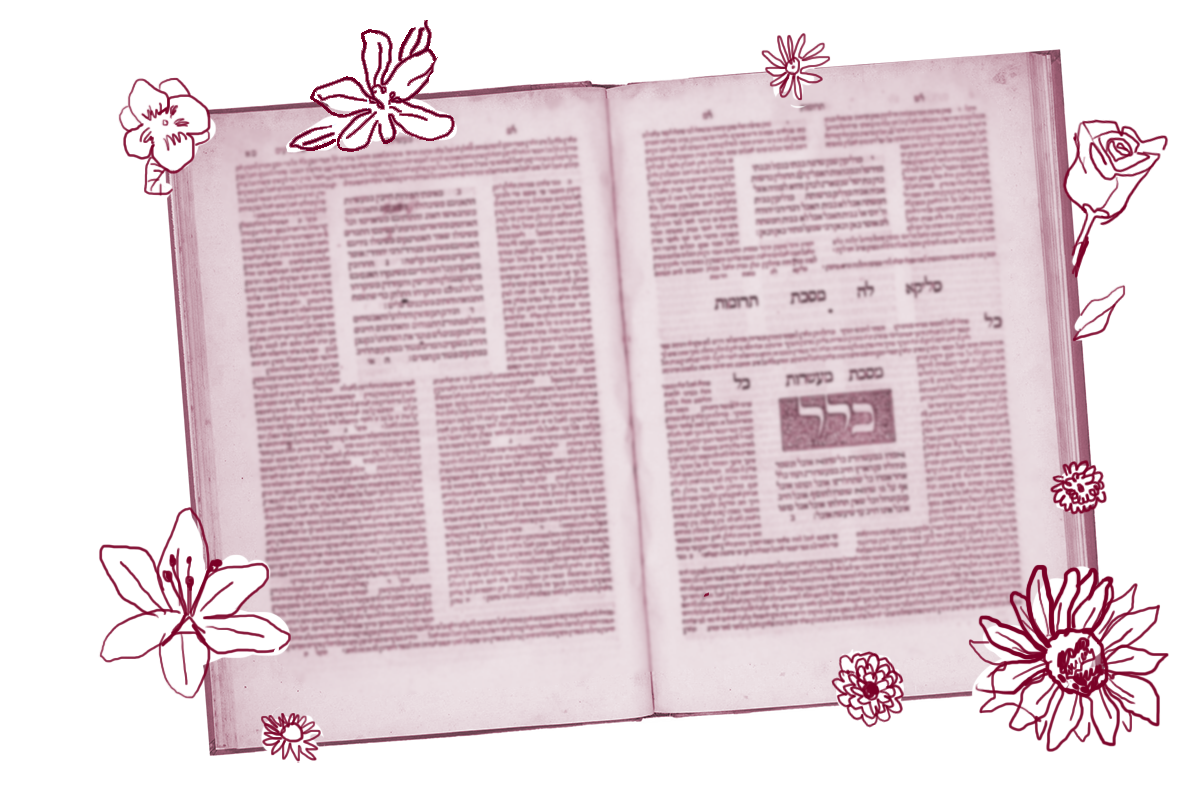Tractate Taanit has been a whirlwind tour of the ancient Jewish response to communal disaster. We’ve contemplated some of the worst tragedies that can befall a people — starvation, devastating illness, slaughter. And yet, surprisingly, the tractate has not felt especially morose, perhaps because it is packed with stories, many of them with a folklorish quality, detailing amazing miracles wrought by wonder-workers who averted unspeakable disaster at the eleventh hour. As we have encountered elsewhere, the rabbis display a remarkable ability to speak frankly about difficult topics with a trademark mix of poignancy and buoyancy, anxiety and hope, grim realism and unlikely faith.
So perhaps it is fitting that in the final sugya of this tractate, which began on the bottom of yesterday’s page, we turn from fixed days that commemorate tragedy to one that is celebratory: Tu B’Av (literally: the 15th of Av), which has come to be known as Jewish Valentine’s Day. As Rabban Gamliel teaches in a mishnah:
There were no days as happy for the Jewish people as the 15th of Av and as Yom Kippur.
Yom Kippur was a day of joy because it afforded the entire nation a clean slate for the coming year (and, as the Gemara adds, because it was the day that Moses received the second pair of tablets after he hurled the first pair into the Golden Calf). But what made Tu B’Av so joyful?

Help us keep Jewish knowledge accessible to millions of people around the world.
Your donation to My Jewish Learning fuels endless journeys of Jewish discovery. With your help, My Jewish Learning can continue to provide nonstop opportunities for learning, connection and growth.
The rabbis attach several happy historical events to this date. First, it was the day the tribes were allowed to intermarry with one another after an initial ban designed to protect tribal integrity. Second, it was the day on which the tribe of Benjamin was readmitted into the fold after committing a crime so heinous it caused a war between the tribes. (The Gemara doesn’t spell it out explicitly, but we will: The Benjaminites threatened to gang rape a traveling Levite and he offered up his concubine in his stead for the brutal attack, which she does not survive. To warn the other tribes, the Levite then dismembers the concubine and sends pieces of her body to each and every tribe. See Judges 19–20.)
According to the Gemara, Tu B’Av also celebrates the end of the prolonged period during during which the first generation of the Exodus died off in the wilderness, King Hoshea’s removal of the evil king Jeroboam’s guards from the road to Jerusalem (allowing pilgrims through), the laying to rest of those massacred at Beitar during the Bar Kochba Revolt, and more. These joyful remembrances all have a dark side, recalling a time when a heavy societal burden was lifted.
Perhaps, though, there is no feeling more ecstatic than relief from a heavy burden. The buoyancy of Tu B’Av is best expressed by the ritual observed on that day. Unmarried women would don white clothes (all borrowed, so it would not be obvious if anyone did not own a white garment) and dance in the orchards. Young men would come out, looking for a marital match. The Gemara tells us that on that day all of the women — the beautiful, the well-connected and even the homely — were considered desirable.
It wasn’t just a holiday for the women, either. Tu B’Av, it turns out, was also a holiday for the trees. Exactly six months after Tu Bishvat (which Tractate Rosh Hashanah designated as the new year for trees) the trees also celebrated an end to a persecution of sorts because this was the date on which the season of chopping them down to secure fuel for the altar ceased. For fall and winter, the trees were safe from the axe, and therefore this was a day of rejoicing for them as well.
The Gemara leaves us with one more incredible image. We move from happy trees and whirling women to finish out the tractate with a cosmic dance party to take place at the end of days, hosted by none other than God:
Ulla of Bira’a said that Rabbi Elazar said: In the future, in the end of days, the Holy One, Blessed be He, will arrange a dance of the righteous, and God will be sitting among them in the Garden of Eden, and each and every one of the righteous will point to God with his finger, as it is stated: And it shall be said on that day: Behold, this is our God, for whom we waited, that He might save us. This is the Lord; for whom we waited. We will be glad and rejoice in His salvation. (Isaiah 25:9)
In this way, the tractate counterbalances the deep dive into communal tragedy by leaving us with an image of ultimate relief — basking in the Garden of Eden and dancing with God, who has been finally revealed and made accessible, allowing us to imagine, just for a moment, what it might feel like to know permanent security and joy.
Read all of Taanit 31 on Sefaria.
This piece originally appeared in a My Jewish Learning Daf Yomi email newsletter sent on December 13th, 2021. If you are interested in receiving the newsletter, sign up here.


